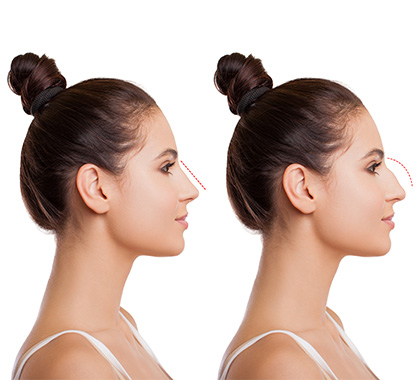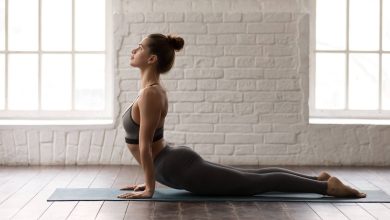Rhinoplasty: Cosmetic Surgery of the Nose

What is a rhinoplasty?
What is a rhinoplasty? Rhinoplasty is cosmetic nose surgery. This procedure corrects a bump, a deviation, an aspect that is too long, or a drooping point. It can sometimes also improve breathing by treating the septum of the nose: this is called septoplasty.
When a patient undergoes their first nose job, it is called primary rhinoplasty. This term is opposed to that of secondary rhinoplasty, or even revision rhinoplasty, terms which are used when the rhinoplasty is not the first to be undergone by the patient.
- Rhinoplasty (nose surgery) is to restore the harmony of the nose and balance the facial proportions.
- The goal is to get a natural look for your nose.
- The principle is to reshape the bone and cartilage which constitute the infrastructure of the nose.
- The skin covering the nose will have to readjust and recover thanks to its elasticity.
- Rhinoplasty also aims to correct a functional problem that hinders breathing: nasal obstruction, deviation of the septum, hypertrophy of the turbinates, the problem of nasal valves …
- All these anomalies are detected during the consultation by an examination of the nose and additional examinations (scanner, rhinomanometry …).
It may be useful in certain cases to combine plastic surgery of the chin ( genioplasty ) or of the forehead, in order to rebalance the proportions of the nose with those of the face. This is called Profil Plast.
Why have a rhinoplasty?
The decision to “get your nose done” should never be taken on a whim or for fashion reasons.
- The nose is what we see first on a face, it contributes to its harmony.
- One or more faults present will break this harmony and draw the eye specifically to the nose. For example, a bump on the nose or a tip of the nose that is too wide.
- The nose participates in breathing, and deformation of it can cause respiratory problems, sinusitis, functional disorders, etc.
- Once a correction has been made, and the nose is harmonized, it is the eyes, the gaze, the mouth that we will see first: all the expressiveness of the face will no longer be marred by an unsightly nose.

What type of rhinoplasty is best for me?
- There are as many types of rhinoplasty as there are different noses.
- After analyzing the characteristics of each nose, and the wishes of each patient, we can end up with a rhinoplasty project using, in particular, computer simulations.
- Among the most common requests include the following corrections: nose hunchbacks, deviated or crooked, tips or nose too wide, tips drooping, a nose too prominent …
- The ultrasonic rhinoplasty, a new surgical rhinoplasty method developed in Paris by Dr. Gerbault, allows the nose to operate in a much more delicate manner and with less risk than during conventional rhinoplasty. Social eviction is also greatly reduced.
- Remodeling of the nose without surgery is possible by injection of fillers with a duration of effectiveness of the order of one year to 18 months: this is called a medical rhinoplasty. Cosmetic doctors can also perform this procedure.
It is best to wait until the end of growth before a rhinoplasty, which is usually between 15 and 16 years of age. It is also important to ensure the psychological maturity of young patients.
What is an ultrasonic rhinoplasty?
The ultrasonic rhinoplasty is a new method of cosmetic nose surgery developed by Dr. Olivier Gerbault.
What is a structural rhinoplasty?
The structural rhinoplasty is to strengthen the architecture of the cartilaginous and bony nose. Contrary to what one might think, the nose is not a “castle of bricks” but a “house of cards”. In order to prevent “the house of cards from collapsing”, it is essential to strengthening the structure of the nose. Structural rhinoplasty makes it possible to rebalance and harmonize the nose by precisely controlling the positioning and fate of the constituent elements of the nose.
This helps to improve the quality of aesthetic results, for example:
- Obtain a real refinement of the tip on very thick skin, without creating the deformations or the aspects of the operated nose that can follow traditional rhinoplasties.
- Preserve the aesthetic result over time. With older techniques, it was not uncommon to have a nice nose the first few months before Corbin’s beak or a slight deviation of the tip subsequently appeared and to preserve the respiratory function of the nose 👃.
What is a cartilage graft?
As part of rhinoplasty, a cartilage graft consists of taking a piece of cartilage in a place where its role is not important and does not cause noticeable aesthetic sequelae, to place it at the level of the nose.
Read More: Benefits Of Bimat Eye Drops For Eyelashes Growth
Cartilage grafts can be harvested:
- The nasal septum (in the nose)
- Certain cartilages of the ear (the scar is then hidden behind the ear or in a hollow on the pinna of the ear)
- on some ribs (with a scar hidden in the groove under the breast lift, or located on the chest)
The grafts can be placed either:
- under existing structures to keep them in place, strengthen them or avoid subsequent deformations (inlay grafts)
- above and therefore under the skin to modify a shape, to increase a volume, or to camouflage a defect (grafts in only)
Onlay grafts should be avoided whenever possible in cases of thin skin, as they may sooner or later become visible under the skin, although certain precautions can minimize this risk. On the contrary, when the skin is thick, only these grafts allow maximum refinement to be obtained and the risks specific to thick skin to be avoided.
When cartilage grafts are needed during an operation, they are almost always taken from the nasal septum, and without negative aesthetic or functional consequences.

What is an open rhinoplasty?
Open rhinoplasty has existed since the 80s; it is to visualize the central structures of the nose through a small scar from a few millimeters between the two nostril holes, which is rapidly and almost always imperceptible after a few weeks.
Extended open rhinoplasty is an important advance in rhinoplasty, and was described by Doctor Gerbault in 2014. It allows the visualization of all the structures of the nose and is no longer just the central part. In order to be able to reshape all these structures. Structures under direct visual control. Extended open rhinoplasties are used in the vast majority of cases, and their consequences are similar to those of classic open rhinoplasties.
What is a preservation rhinoplasty?
Preserving rhinoplasty ( preservation rhinoplasty ) is a term coined by Dr. Rollin Daniel Los Angeles with whom Dr. Gerbault learned rhinoplasty for more than 15 years.
Rhinoplasty on thin or thick skin?
Conventionally distinguished the thin skins, the thick skins, and combination skin, which represent intermediate cases. It is easy to tell them apart by looking and feeling the skin of the nose :
- If the skin is fairly light, we can see the contours of the cartilages underneath, that to the touch, the thickness of the tissues under the skin is thin and it is mobile above the cartilage and bone structures, we will talk about thin skin.
- If the skin is rather seborrheic, with dilated pores or even blackheads, the contours of the cartilages and bones are not at all visible, that to the touch, the skin seems adherent to the cartilaginous and bone structures located below, we will talk about thick skin.
What is mature skin?
Overall, the skin of young subjects is rather elastic and adapts well to changes in shape resulting from rhinoplasty. The older we get, the more the skin tends to become thinner and lose its elasticity. It is then likely to adapt less well to noticeable changes in shape. It is more difficult for the skin to recover on certain parts of the nose. Leaving an excess or folds that are difficult to treat. These phenomena are even more sensitive when the skin has been exposed to the sun a lot. Or when there has been noticeable smoking.
With age, past 40-45 years, the bones are more brittle, the cartilages harder. Changes to these structures can easily lead to irregularities. Gentle instruments like ultrasonic instruments can reduce this type of problem, but do not completely eliminate them. We use the same principles as with thin skin. But also try not to reduce the osteocartilaginous structures too much so as not to create excess skin which will result in visible folds.
It should be noted that some mature skin ages and thickens. Due to a significant development of the sebaceous glands, resulting in at most in an appearance called rhinophyma. The treatment of this type of skin is similar to what is done for thick skin.



